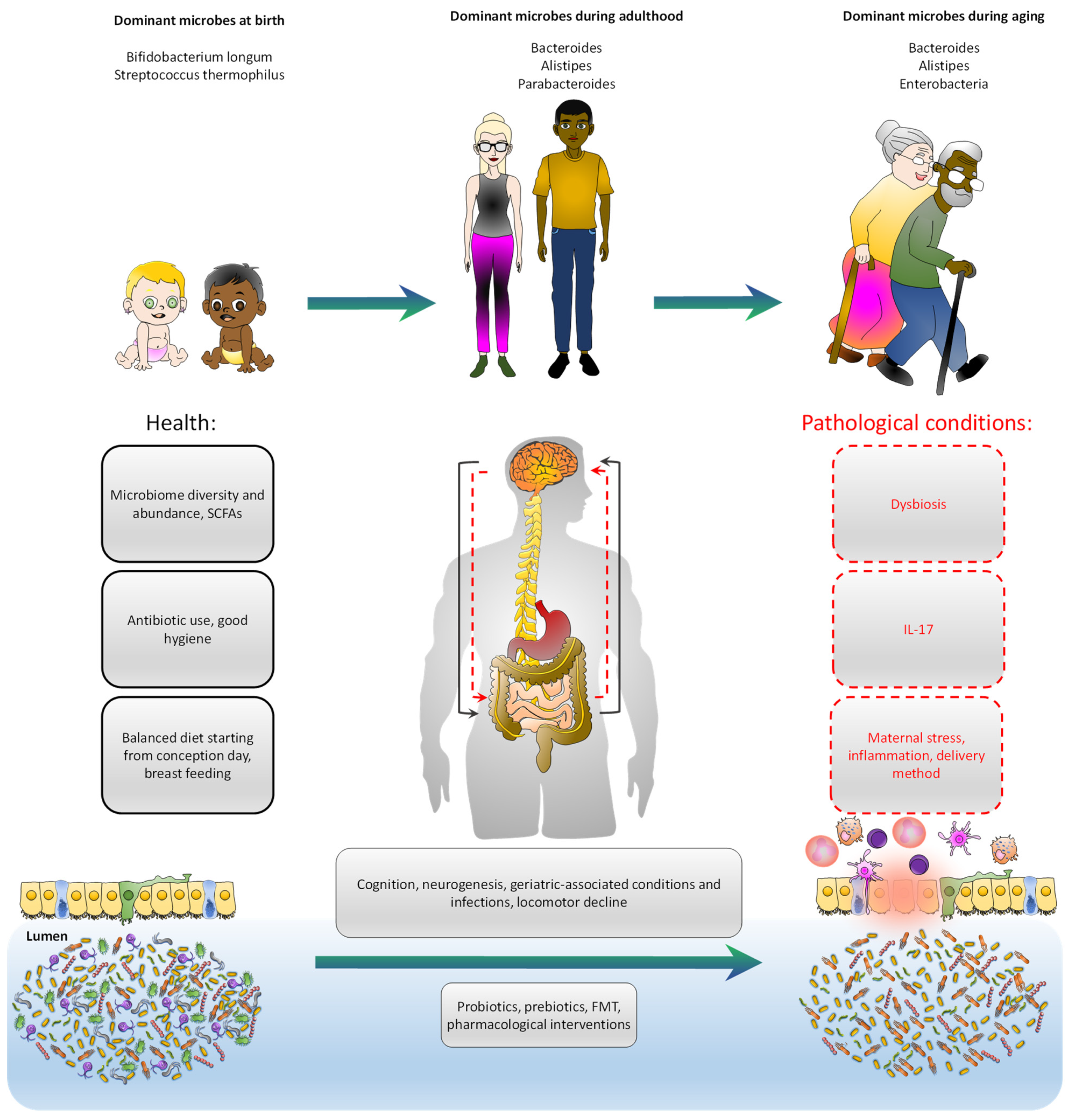💡 The study aimed to investigate the potential interactions between gut microbiota, markers of accelerated aging (telomere length – TL), and inflammation (high-sensitivity C-reactive protein – hsCRP) in patients with severe mental disorders, specifically schizophrenia (SCZ) and major depressive disorder (MDD). The secondary analysis explored associations at both genus and phylum levels and considered potential covariates.
📍 Methods:
Participants:15 controls, 35 patients with SCZ, and 31 patients with MDD. Recruitment from a community mental health center, comprising 50 males and 31 females. Mean and median age of participants: 46.8 and 46.3 years, respectively.
Data Collection:16S rRNA sequencing for gut microbiota analysis. TL measured via quantitative fluorescence in situ hybridization. hsCRP levels assessed as a marker of inflammation. Logistic regression employed for statistical modeling.
Statistical Analysis: Logistic regression used to test interactions between gut microbiota and TL, hsCRP. Adjustment for covariates, including age.
📍 Key Findings:
📌 Genus Level Interactions:
𝘓𝘢𝘤𝘩𝘯𝘰𝘴𝘵𝘳𝘪𝘥𝘪𝘶𝘮: Statistically significant interaction with TL. Associated with reduced likelihood of MDD, even after covariate adjustment. No significant interaction with hsCRP.
𝘈𝘤𝘵𝘪𝘯𝘰𝘣𝘢𝘤𝘵𝘦𝘳𝘪𝘢: Significant interaction with TL in MDD. Consistent with literature showing increased relative proportion in MDD.
𝘋𝘪𝘢𝘭𝘪𝘴𝘵𝘦𝘳 (𝘝𝘦𝘪𝘭𝘭𝘰𝘯𝘦𝘭𝘭𝘢𝘤𝘦𝘢𝘦 family): Significant interaction with TL in SCZ. Associated with cognition-related measures in SCZ.
𝘓𝘢𝘤𝘩𝘯𝘰𝘤𝘭𝘰𝘴𝘵𝘳𝘪𝘥𝘪𝘶𝘮: Significant interaction with TL in HCs compared to MDD.
Associated with depressive symptoms in previous studies.
📌 Phylum Level Interaction:
𝘝𝘦𝘪𝘭𝘭𝘰𝘯𝘦𝘭𝘭𝘢𝘤𝘦𝘢𝘦: Significant interaction with TL in SCZ. Consistent with previous findings associating this phylum with SCZ.
📍 Conclusion:
The study provides evidence of significant interactions between gut microbiota, TL, and specific mental disorders (MDD and SCZ). Despite limitations, the findings suggest a potential role of microbial signatures, such as 𝘓𝘢𝘤𝘩𝘯𝘰𝘴𝘵𝘳𝘪𝘥𝘪𝘶𝘮, 𝘈𝘤𝘵𝘪𝘯𝘰𝘣𝘢𝘤𝘵𝘦𝘳𝘪𝘢, 𝘋𝘪𝘢𝘭𝘪𝘴𝘵𝘦𝘳, 𝘢𝘯𝘥 𝘝𝘦𝘪𝘭𝘭𝘰𝘯𝘦𝘭𝘭𝘢𝘤𝘦𝘢𝘦, in modulating the risk and characteristics of severe mental disorders. Further research with larger samples and experimental designs is warranted to validate and explore the causal relationships suggested by these interactions.
Link to the article : https://tinyurl.com/4r5spb6c
